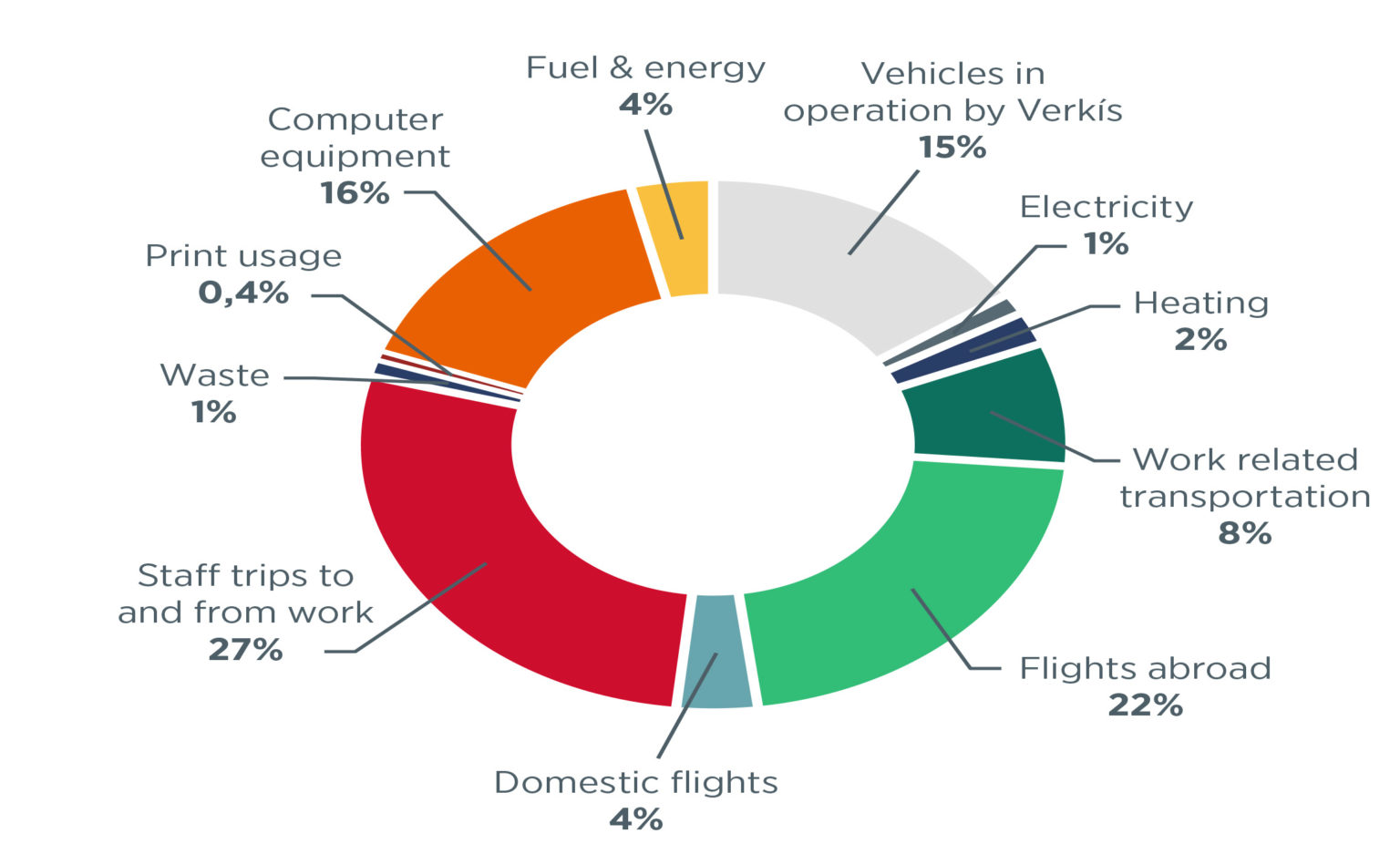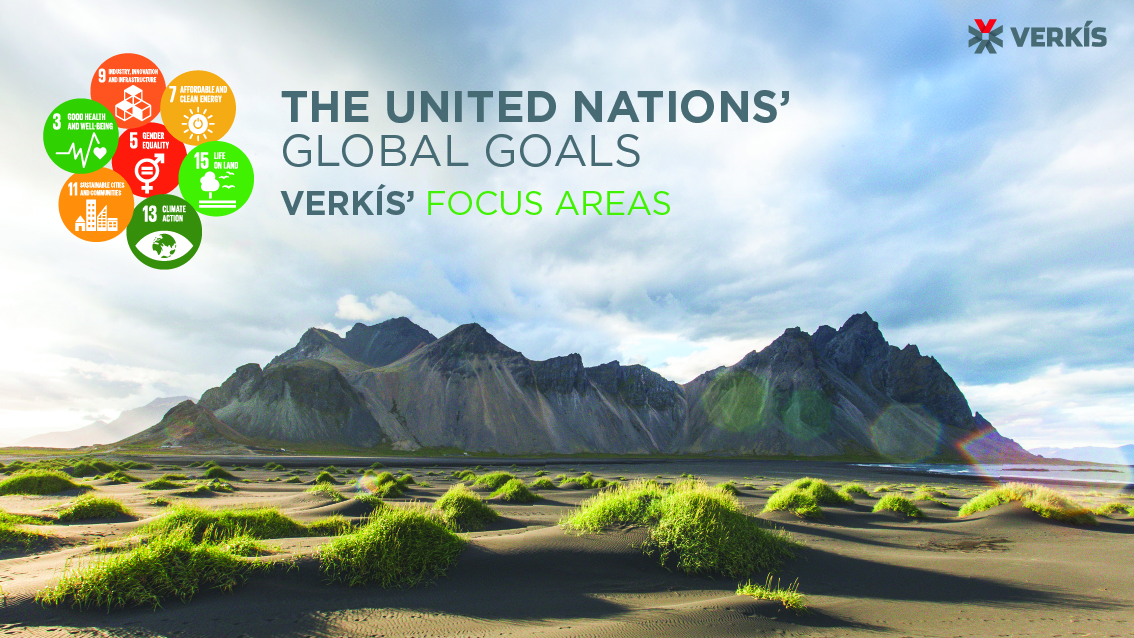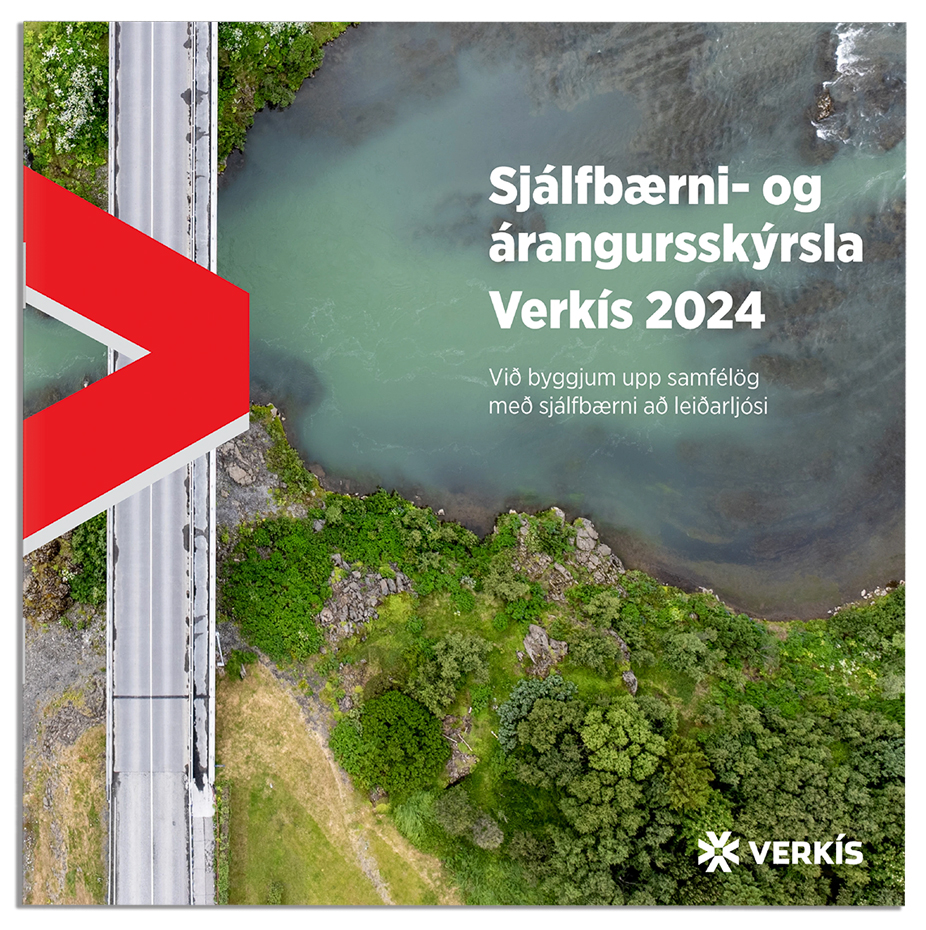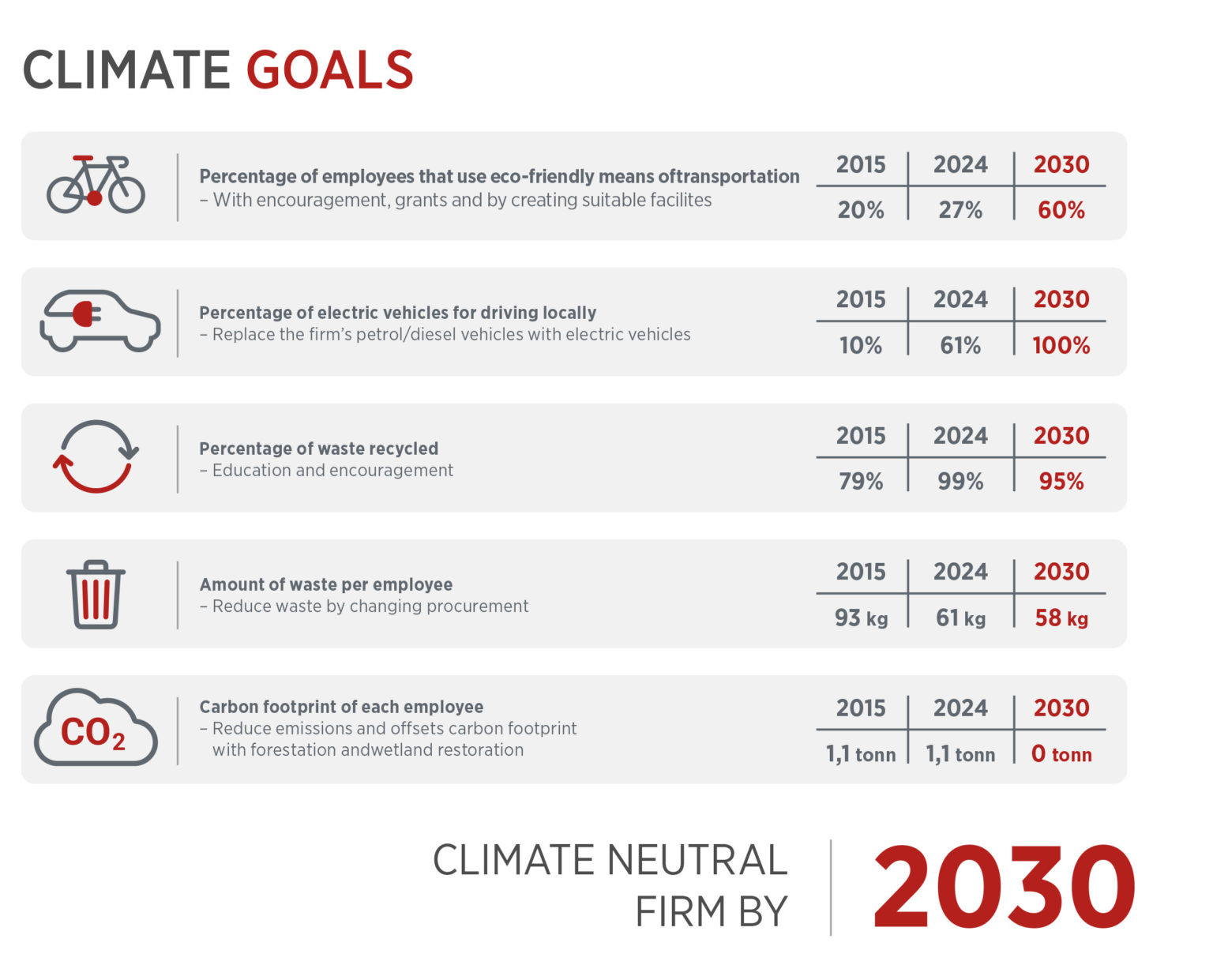With sustainability as a guide
Verkís’ sustainability
Verkís’ mission is to create value and support the development of society and its infrastructure through expert advice and design. With a clear vision for the future, Verkís has developed a strategic focus on customers, staff, and society. The company places strong emphasis on sustainability, service, and human resources policies, all of which align with the United Nations’ global goals and the UN Global Compact.
Verkís takes great pride in ensuring that its activities benefit everyone. We encourage responsibility in our work, guided by sustainability to positively impact society and the environment. Our staff is dedicated to finding solutions and delivering services that meet the key criteria for sustainable development.
Sustainability at Verkís
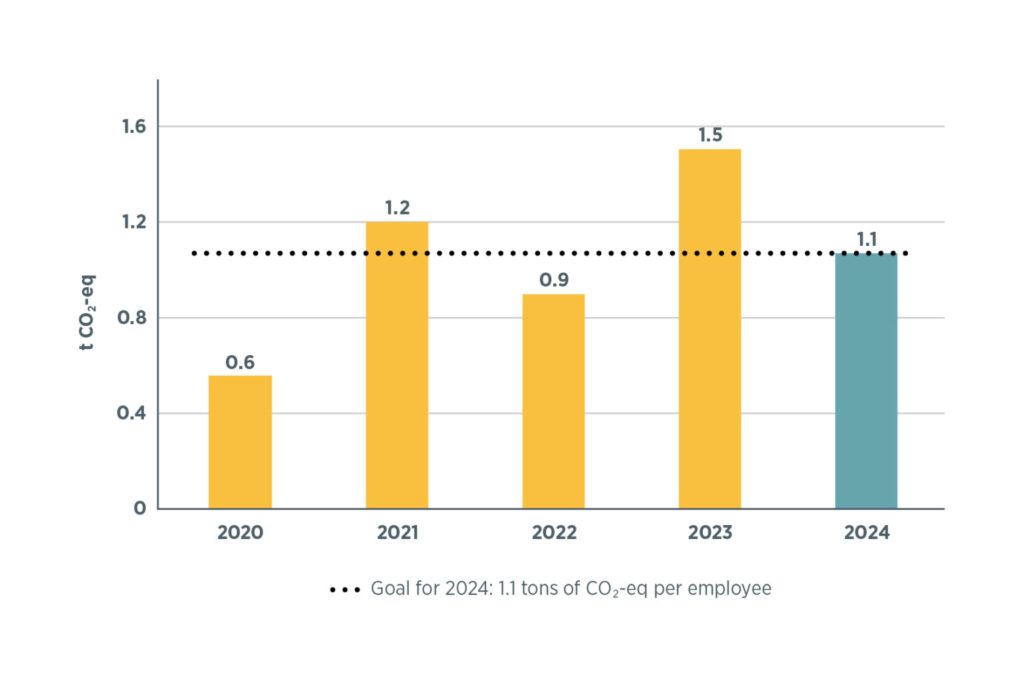
Main findings of the 2024 sustainability report
Verkís’s total emission in 2024
The total greenhouse gas (GHG) emissions per employee amounted to 1.1 tonnes of CO₂-equivalent. This represents a 23% reduction from the previous year. The company’s carbon footprint includes both direct and indirect GHG emissions related to Verkís’ operations.
Direct emissions are those that occur from sources owned or controlled by the company, such as fuel combustion in company vehicles.
Indirect emissions arise from purchased energy, supply chain activities, and product use — the latter being the largest contributor to the overall carbon footprint.
Main findings of the 2024 sustainability report
Origin of emissions 2024
The largest emission sources for Verkís in 2024 fall under Scope 3, accounting for approximately 81% of total emissions. The most significant contributors are business travel and commuting by employees, which together make up 60% of total emissions. Travel activity related to projects increased in 2024 compared to the previous year, and it is evident that more employees returned to the workplace in 2023 instead of working from home.
Scope 1 greenhouse gas emissions include direct emissions from company-owned sources. This includes emissions from the combustion of fossil fuels in company vehicles, which increased significantly year-on-year and now represent around 15% of total emissions. Scope 2 emissions, which account for just under 3% of Verkís’ carbon footprint, are indirect emissions resulting from electricity and heating consumption.
